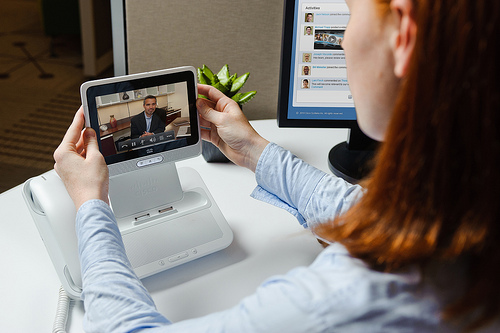Samsung to make the Super AMOLED touchscreen available for 7” tablets
Articles
Samsung to produce 7" high-res AMOLED display | SammyHub.com
Un écran tactile AMOLED 7″ à « forte » résolution chez Samsung | Le Journal du Geek
My comments
Samsung have been involved in developing the active-matrix OLED display over a long time and have refined it in to a single-layer AMOLED touchscreen display that is pitched at smartphones.
As you all will know, the difference between the OLED display and the LCD display is that the way the display is lit up. An OLED display uses power to actually light up the pixels rather than dynamically passing light through a filter that makes up the image, a practice that is done with LCDs.
There are some key benefits that these displays have such as high contrast, improved colour, a wide viewing angle as well as energy saving due to only needing to light up what is needed on the display. Infact I have described the OLED display as a “vacuum fluorescent display” for battery-operated devices because the displays have that same bright and crisp display characteristic as the vacuum-fluorescent displays used on a large range of good-quality consumer electronics like DVD players and home-theatre receivers.
For that matter, I currently own the Samsung Galaxy S Android smartphone which has this display technology and have been pleased with the way it handles regular display activity including pictures and videos. This is even after I have owned the Nokia N85 Symbian S60 smartphone which uses the same AMOLED display technology in a non-touchscreen application.
Now they have taken this technology further by developing the Super AMOLED Plus which is the same AMOLED display with integrated capacitive touchscreen as used in these Galaxy S series smartphones, but as a 7” 1024×768 variety.
At the moment, the obvious application for this display would be the 7” tablet but I would see it appeal to more applications such as dashboard touchscreens for the car or boat. This may also include the double-DIN multifunction head units that will appeal to the young males who want to equip their cars with street-worthy sound systems.
If Samsung wanted to have sufficient manufacture quantities for these displays as they do for the small OLED displays used in the smartphones, they would have to build one of their Galaxy Tab 7” tablets with these displays. This also includes encouraging other manufacturers to implement them in a 7” tablet model.
Who knows when it would be that Samsung would take the integrated touchscreen AMOLED display technology up to the 10” size for the larger tablets and netbooks.

